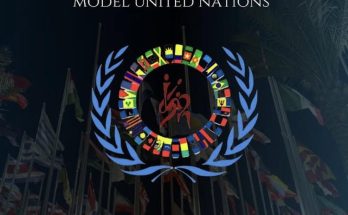 Fostering regional consciousness needs mammoth efforts. South Asia has a formal mechanism of cooperation for cooperation among its member countries through the vibrant organisation of the South Asian Association for Regional Cooperation (SAARC) since 1985. As part of my training at the Indian Foreign Service Institute, before being confirmed in the Indian Foreign Service, I had visited the foreign ministries and the Foreign Service Institutes of the neighbouring South Asian countries between 2004-2005. In those days, the idea of deeper interaction among South Asians always brought back memories of my days spent in Jawaharlal Nehru University and Delhi University. I cherished the company of students from the South Asian countries who enriched my academic life in many ways.
Fostering regional consciousness needs mammoth efforts. South Asia has a formal mechanism of cooperation for cooperation among its member countries through the vibrant organisation of the South Asian Association for Regional Cooperation (SAARC) since 1985. As part of my training at the Indian Foreign Service Institute, before being confirmed in the Indian Foreign Service, I had visited the foreign ministries and the Foreign Service Institutes of the neighbouring South Asian countries between 2004-2005. In those days, the idea of deeper interaction among South Asians always brought back memories of my days spent in Jawaharlal Nehru University and Delhi University. I cherished the company of students from the South Asian countries who enriched my academic life in many ways.
The visit gave me an opportunity to meet the young Bangladeshi, Nepali and Sri Lankan officer-trainees. During our meetings we felt that it would be a great learning experience for the young officer-trainees of the SAARC member countries if we could spend a week or so together and share our ideas and aspirations with each other.
After my visit to Nepal, Bangladesh and Sri Lanka, I wrote a paper titled ‘South Asian Affairs’ proposing a South Asian University in 2005. I was glad to see that the establishment the new South Asian University was announced later that year in Dhaka at the 13th SAARC Summit, though it may not have been possibly because of my paper. The South Asian University is functioning since 2010 at Akbar Bhawan, New Delhi, paving the path for a new South Asia.
After the milestone achievement in the history of SAARC with the establishment of the South Asian University, I believe a SAARC Anthem, a song that all South Asians could sing together, can act as a catalyst in fostering deeper South Asian consciousness and fraternity. I am now ready with a SAARC anthem after a very warm and enthusiastic reception of the Earth Anthem internationally which I wrote and produced recently.
 Since the release of the Earth Anthem in June this year, it has been translated into major world languages. The Central Board of Secondary Education (CBSE), India has put this on its website to familiarise students studying in schools affiliated with it. I have been informed that the UNESCO is going to turn the idea of an official Earth Anthem into a global initiative. I hope a Global Earth Anthem Challenge will be launched soon and the best judged entry will be declared as the official anthem of our planet earth.
Since the release of the Earth Anthem in June this year, it has been translated into major world languages. The Central Board of Secondary Education (CBSE), India has put this on its website to familiarise students studying in schools affiliated with it. I have been informed that the UNESCO is going to turn the idea of an official Earth Anthem into a global initiative. I hope a Global Earth Anthem Challenge will be launched soon and the best judged entry will be declared as the official anthem of our planet earth.
Regional and international anthems have been in use for quite some time now. Some of the other prominent regional organisations have their own international anthems. For example, the European Union uses ‘Beethoven’s Symphony No. 9 (Ode to Joy part)’ as its anthem while the African Union has adopted its own anthem titled ‘Let’s All Unite and Celebrate Together’. The Association of South East Asian Nations (ASEAN) has adopted an official anthem titled ‘ASEAN Way’ in 2008 which is in English. As per ASEAN, its anthem is an expression of ASEAN unity and strengthens the sense of ASEAN identity and belonging among the peoples of the region.
Being aware of the huge popularity of Bollywood films in South Asia, I have written an anthem for SAARC in mix of nine languages spoken and understood in the South Asian countries:
South Asian Anthem – Multilingual (composes in 9 languages of the region)
“Himalaya theke Hinda Sagor,Naga Hills theke Hindukush (Bangla)/Mahaweli inn Ganga, Sindhu inn Brahmputra (Dhivehi)/Lakshadweep, Andaman, Everest, Adam’s Peak (English)/Kabul Lay Thimphu Tsuen, Male Lay Kathmandu (Dzongkha)/Dilli sita Dhaka, Colombin, Islamabad (Sinhala)/Harek paila saath-saath,Harek paila saath-saath (Nepali)/Dzongkha, Hindi, Nepali,Bangla, Pashto, Sinhala (Pashto)/Urdu, English, Dhivehi,Har kadam saath-saath, Har kadam saath-saath/Apni-apni pehchan, apne-apne arman (Urdu)/Shanti ki baat-baat, Har kadam saath-saath (Hindi)/Har kadam SAARC saath, Har kadam saath-SAARC/Har kadam SAARC saath,Har kadam saath-SAARC.”
Naga and Chin hills mark the eastern frontiers of SAARC member states. Mahaweli is the longest river of Sri Lanka while Adam’s Peak is its most venerated peak. Sri Lanka has two official languages – Sinhala and Tamil. Afghanistan, too, has two official languages — Pashto and Dari. I have chosen the language of their national anthems. Dhivehi is the official language of the Maldives.
T his is to inspire the SAARC Secretariat to launch a competition in all SAARC Member countries and declare the best judged entry as the official SAARC Anthem. Once adopted, the official SAARC Anthem could be encouraged at the formal meetings of SAARC as well as SAARC’s apex and recognized bodies. It could also be played to commemorate special occasions such as the SAARC Charter Day (December 8).
his is to inspire the SAARC Secretariat to launch a competition in all SAARC Member countries and declare the best judged entry as the official SAARC Anthem. Once adopted, the official SAARC Anthem could be encouraged at the formal meetings of SAARC as well as SAARC’s apex and recognized bodies. It could also be played to commemorate special occasions such as the SAARC Charter Day (December 8).
SAARC member countries could be encouraged to translate and produce the official SAARC Anthem into local languages as a way to promote the anthem and foster South Asian consciousness and fraternity among their citizens.
(The writer, an Indian diplomat, is a winner of the SAARC Literary Award. The views expressed are solely those of the author).
Author Profile

-
Cdr. Abhay Singh is a Research Fellow at the Military Affairs Centre in the Institute for Defence Studies and Analyses, New Delhi. He is an Indian Navy veteran with extensive command and staff experience spanning 27 years. A surface warfare officer with a specialisation in Missile and Gunnery Warfare, he has commanded various naval platforms which include frontline frigate, submarine rescue & deep diving vessel, and fleet auxiliary. He has also served as Director (Military Affairs) in the Disarmament and International Security Division of the Ministry of External Affairs.
Cdr. Singh is an alumnus of the Naval Academy, Defence Services Staff Course and Naval War College. He has an MSc (Defence and Strategic Studies) from the University of Chennai and an MPhil from Mumbai University.
His publications include: “Maritime Exclusion Zone: Legal Perspectives and Strategic Option,” Maritime Affairs, Vol. 4, No. 1 (Summer 2008), 79–111; “Cross LOC Strike and India’s Reputation for Resolve”, IDSA Comment, October 21, 2016; “The Admiralty (Jurisdiction and Settlement of Maritime Claims) Bill 2016 – The Long Journey of an Important Maritime Legislation”, IDSA Comment, October 03, 2016.
Latest entries
 DiplomacyOctober 25, 2016Cross LOC Strike and India’s Reputation for Resolve
DiplomacyOctober 25, 2016Cross LOC Strike and India’s Reputation for Resolve Books / PoetryNovember 24, 2014The Seduction of Delhi
Books / PoetryNovember 24, 2014The Seduction of Delhi CultureDecember 22, 2013The SAARC spirit: Celebrating our South Asianess
CultureDecember 22, 2013The SAARC spirit: Celebrating our South Asianess CultureJune 13, 2013Why We need an Earth Anthem
CultureJune 13, 2013Why We need an Earth Anthem







